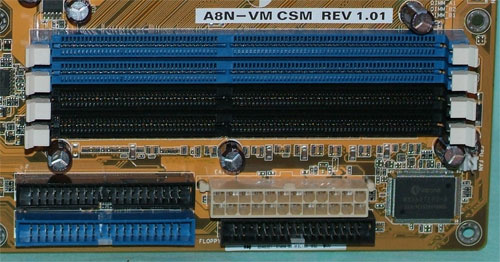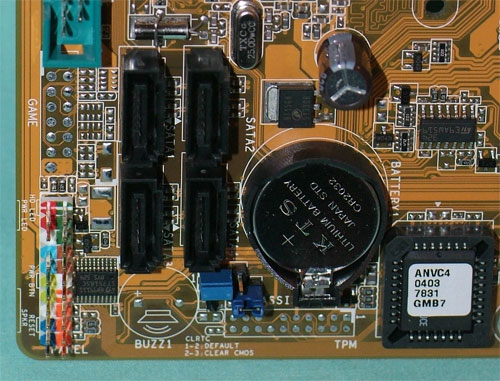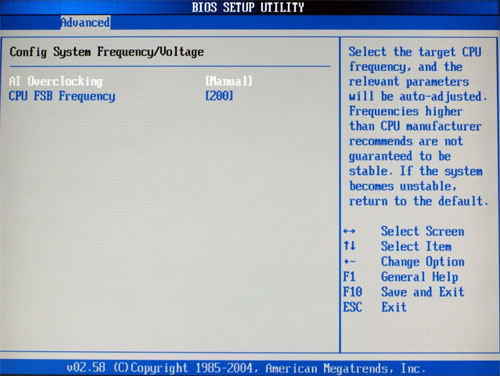Asus A8N-VM CSM: NVIDIA GeForce 6150 Finally Arrives
by Wesley Fink on December 1, 2005 12:04 AM EST- Posted in
- Motherboards
More Features: Asus A8N-VM CSM
The 4 DIMMs support up to 4GB of ECC/non-ECC unregistered DDR memory in a dual-channel configuration. The color coding is correct here - match colors for each channel - but this places the DIMMs with no spacing in-between in a 2-dimm setup. IDE and Floppy cable connections are all at the upper right edge, which is normally the best location.

The 4 DIMMs support up to 4GB of ECC/non-ECC unregistered DDR memory in a dual-channel configuration. The color coding is correct here - match colors for each channel - but this places the DIMMs with no spacing in-between in a 2-dimm setup. IDE and Floppy cable connections are all at the upper right edge, which is normally the best location.















56 Comments
View All Comments
Wesley Fink - Thursday, December 1, 2005 - link
The Asus DOES include HD Audio with the AD1986 codec - the same codec used for HD on the recently reviewed A8R-MVP. However, SPDIF is provided by an optional SPDIF module and TV out is also an optional module. That means you will need to buy optional modules to fully use these features.Donegrim - Thursday, December 1, 2005 - link
or if they are just headers, solder some wires onto the approriate points. Well, you might save some money.TowerShield - Wednesday, November 30, 2005 - link
Doesn't it have HD Audio? Is the on-board sound not real HD?bob661 - Thursday, December 1, 2005 - link
After looking through the manual for the board it appears that you have to buy a seperate S/PDIF (fiber optic) module in order to get the true 5.1 surround audio. Also, in order to get the TV Out (S-video) you have to buy that seperately too. 5.1 is not standard and neither is the TV Out. That sucks a bit. Why not include at least the optical out as standard considering most motherboards have it?LoneWolf15 - Thursday, December 1, 2005 - link
I agree, ASUS made a big mistake in not including a TV-out +SPDIF (preferrably coax and optical) on a single backplate and including it with this mainboard. This looks like an incredible board for an HTPC product --and that one simple mistake takes it from perfect to missing the mark.bob661 - Thursday, December 1, 2005 - link
It DOES have the HD Audio module but you won't be able to get true 5.1 sound without the optical out.